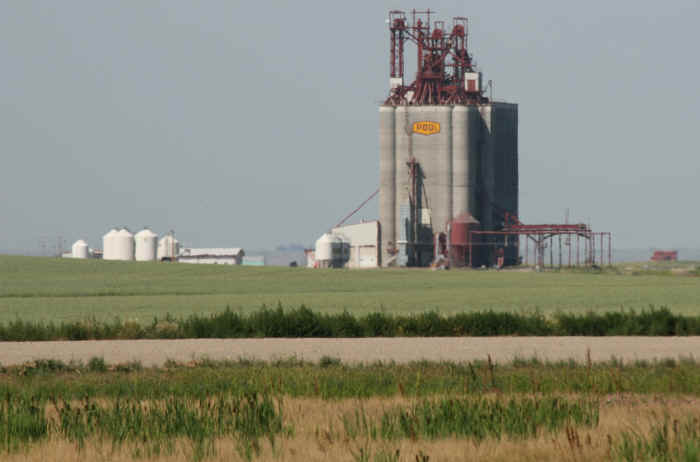< BACK |
NEXT > |
Saskatchewan Scenery Photo Tour
Photo: Grain Elevator

© Leanne Guenther, used with permission
If you were playing a game where you had to come up with symbols of Saskatchewan, the "grain elevator" would definitely be one of them -- nearly every town and city in Saskatchewan has a grain elevator. They are quite large (you can see the size of the elevator compared to the train and house next to it in the photo) and the landscape is very flat -- this makes the grain elevators "stick out" as the most dominant feature for kilometers away when you're driving across the province.
The grain elevator is where the farmers deliver their crops. In Saskatchewan, the grain elevators are run by the "Saskatchewan Wheat Board". When the farmer comes with the grain, the people at the grain elevator measures how much was brought and samples it to rate its quality. The farmer gets paid based on what type of grain they grew (ex: wheat, canola, barley), its "grade" (the quality) and the number of bushels he delivered.
Trains (you can see one running behind the elevator in the photo above) come to the grain elevator to pick up the grain and deliver them to buyers across North America or to ships headed overseas.
Grain elevator information and coloring page
Photo: Modern Grain Elevator

© Leanne Guenther, used with permission
As typical a sight as the "old fashioned" grain elevator is -- it's the larger, more modern version that does most of the work nowadays. They're a lot larger and more efficient than the one in the top photo.
Photo: Granary

© Leanne Guenther, used with permission
Farmers can't just bring their grain to the grain elevator whenever they want -- the elevator would get too full before the train could come if everyone could rush in to deliver at once -- harvest time is a fairly short 2 to 6 week window, so the farmers get a schedule to "take turns" delivering their product.
So! What do they do with the grain?
Farmers have their own "granaries" on their farm land to store their grain until they can take it to the grain elevator (or until the price is something they are happy with). They also store grain for their own use -- particularly for feeding cattle.
A granary is the funny round building with a cone-shaped roof (at the right of the photo). During a very good harvest, the farmer may end up with more grain than will fit in their granary. In these cases, they'll often make great big piles of grain in their field. I've seen piles taller than a house during a "bumper crop". Farmers do their best to cover the piles to protect the grain from weather (and hungry Canada Geese!) but sometimes the piles just sit out and wait their turn to go to market.